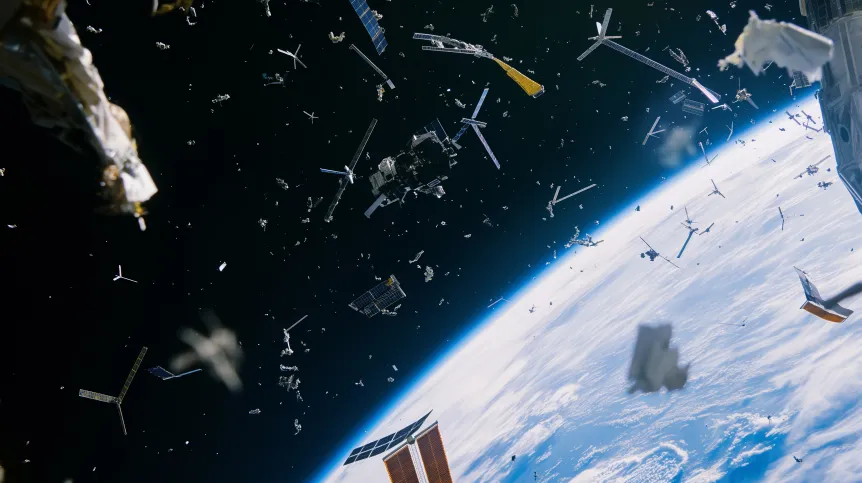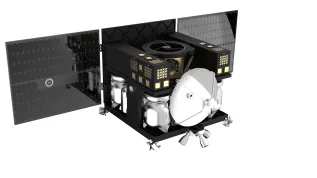
If someone suffers damage as a result of a space debris impact, the state should apply for compensation on their behalf, says Bartosz Malinowski, PhD, a space law expert from the Space Research Center of the Polish Academy of Sciences. He adds that space debris, e.g. fragments of rockets, will fall to Earth in the future.
The Kenyan Space Agency (KSA) reported that on December 30 at around 3:00 p.m. local time (5:00 p.m. CET), a metal ring with a diameter of 2.5 m and a mass of 500 kg crashed in the village of Mukuku, Makueni County. No one died, and the announcement did not mention any damage caused by the impact.
'It would be necessary to determine whether anyone suffered damage. If so, then the government of the country of which the injured party is a citizen should be asked whether it intends to make a claim against the country whose jurisdiction covered the launch of the object into orbit. This can be done on the basis of the Outer Space Convention, which is already full of holes and outdated, because it was created in the 1970s', says Bartosz Malinowski, PhD, a space law expert from the Space Research Center of the Polish Academy of Sciences.
He adds that these approximately 50-year-old regulations are still in force, although they are rarely used. 'In such cases, countries can reach an agreement without referring to the treaty. As a result of negotiations, they determine the compensation amount, among other things', the lawyer says.
According to Malinowski, in the event that, for example, a house is damaged by space debris, the state should represent its citizen in talks with another country. Such cases can be considered by a commission established for this purpose, which determines liability for such events.
The expert adds that one can also pursue one's rights through legal means in the country where the company or institution responsible for the accident (for example, the company that launched the rocket into space) has its headquarters. 'This, of course, is much more difficult and expensive. Not everyone can afford to file a lawsuit, and besides, the justice system in another country does not necessarily have to be open to the claims of the injured party', Malinowski emphasises.
He admits that similar situations may also occur in the future. 'Single-use launch vehicles have many parts that can survive re-entry into the atmosphere instead of burning up in it. These are large aluminium parts such as the ring that fell in Kenya, but also, for example, tanks', he says.
Bartosz Malinowski says that it would be difficult to insure against the impact of a fragment of a space rocket: 'Usually, entities that are involved in launching various objects into orbit are insured. This is insurance against their own liability. The question is whether the insurance industry is ready to sell policies to potential injured parties; insurers would have to properly determine the risk and probability of such events'.
According to the lawyer, it is possible to consider what kind of rockets the parts falling to Earth come from. 'In this case, a separation ring with a diameter of 2.5 m and a weight of half a ton fell in a Kenyan village. Its dimensions and technical properties narrow down the 'group of suspects'. This part may, for example, resemble fragments of the Japanese MV launch vehicle, or the American Minotaur IV', the expert believes.
The first legal acts concerning outer space were the 'Declaration of Legal Principles Governing the Activities of States in the Exploration and Use of Outer Space' of 1963 and the so-called Outer Space Treaty opened for signature in 1967 , formally the 'Treaty on Principles Governing the Activities of States in the Exploration and Use of Outer Space, including the Moon and Other Celestial Bodies'. The later documents include the 'Convention on the Registration of Objects Launched into Outer Space' (1975) and the 'Convention on the Transfer and Use of Data from Remote Sensing of the Earth from Outer Space' (1980).
In 2020, the Artemis Accords were signed - a series of bilateral agreements between the United States and 51 other countries, including Poland. The Accords are related to the NASA Artemis program, under which people will once again land on the Moon by 2026.
Space debris have previously fell to Earth near human habitation. In 2022, part of the SpaceX Dragon capsule crashed on an Australian sheep farm. In March 2024, a cylindrical object weighing about 700 g crashed into a house in Naples, Florida (USA). It was determined that the object that crashed through the roof and two floors of the building was a fragment of a cargo pallet released from the ISS orbital station in 2021. The owners of the house, the Otero family, sued NASA for damages in July; the agency has six months to respond. (PAP)
Anna Bugajska
abu/ bar/ js/













